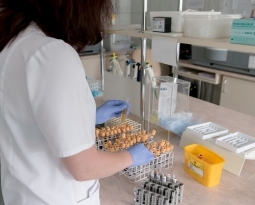When Dallas researchers introduced Twistron, they may have sparked an energy revolution
Scientists from The University of Texas (UoT) in Dallas, in collaboration with researchers from Hanyang University in South Korea, have developed a new fabric that generates energy: twistron. A lightweight yet resilient yarn made from carbon nanotubes woven together, twistron can produce electricity simply by stretching and without the need of a battery or other energy source.
Dr. Carter Haines, an associate research professor at UoT’s NanoTech Institute in Dallas, said, “The easiest way to think of twistron harvesters is, you have a piece of yarn, you stretch it, and out comes electricity.” Carbon nanutobes, from which twistron is constructed, are 10,000 times smaller in diameter than human hair and therefore offer a lightweight material. To harvest energy, twistron initially needed to be soaked in electrolytes, such as saltwater or even human sweat. However, through experimentation and research, the scientists were able to use a solid-state electrolyte to coat the yarn, without soaking the material. From testing, the scientists found stretching the yarn 30 times a second could 250 watts per kilogram. Dr. Na Li, another research scientist at the NanoTech Institute, further described the process, ‘Whenever a harvester yarn is twisted or stretched, the volume of the carbon nanotube yarn decreases, bringing the electric charges on the yarn closer together and increasing their energy. This increases the voltage associated with the charge stored in the yarn, enabling the harvesting of electricity.”
The scientists hope the twistron could be used in clothing and other commercial uses one day. They tested twistron by sewing it into clothing and found that even normal respiration stretched the fabric enough to power electricity. One of the scientists also tested twistron in ocean currents. Dr. Shi Hyeong Kim submerged 10 cm of twistron on the east coast of South Korea and the material successfully generated electricity. Dr. Kim hopes this is a breakthrough for harnessing the strength of the ocean. From these small scale activities, the researchers are confident these activities could be scaled up in the future. The team has patented the technology and are continuing to test its capabilities. Perhaps they could even make batteries superfluous.
Are you also engaging in R&D experiments to develop new ways to generate energy? Did you know that If you conduct your R&D projects in universities, you could receive up to an additional 20% credit for your expenses? To find out more, please contact a Swanson Reed R&D Specialist today.
Swanson Reed regularly hosts free webinars and provides free IRS CE credits as well as CPE credits for CPA’s. For more information please visit us at www.swansonreed.com/webinars or contact your usual Swanson Reed representative.

















